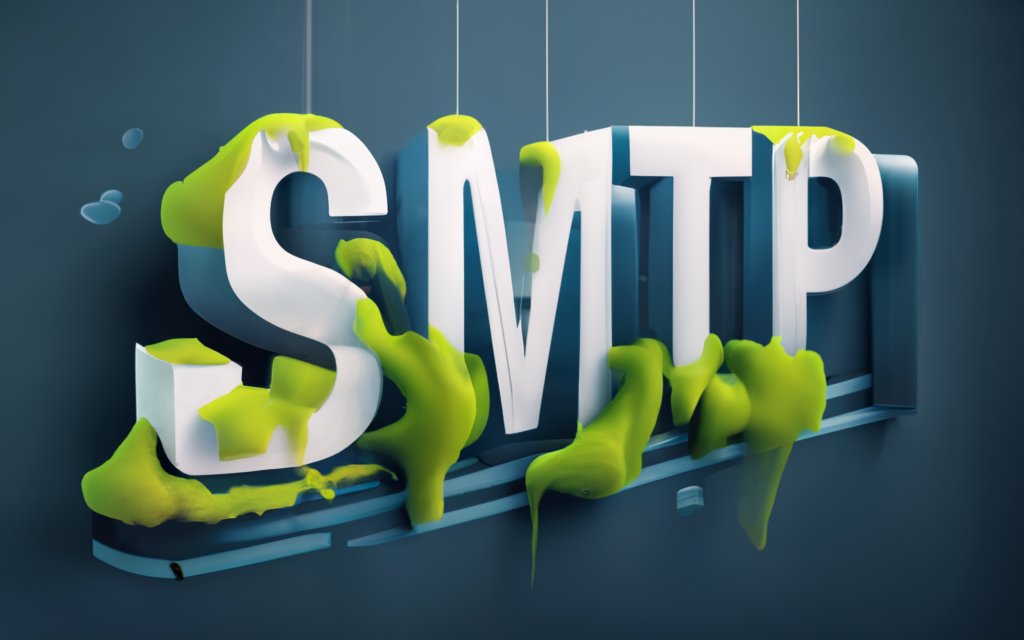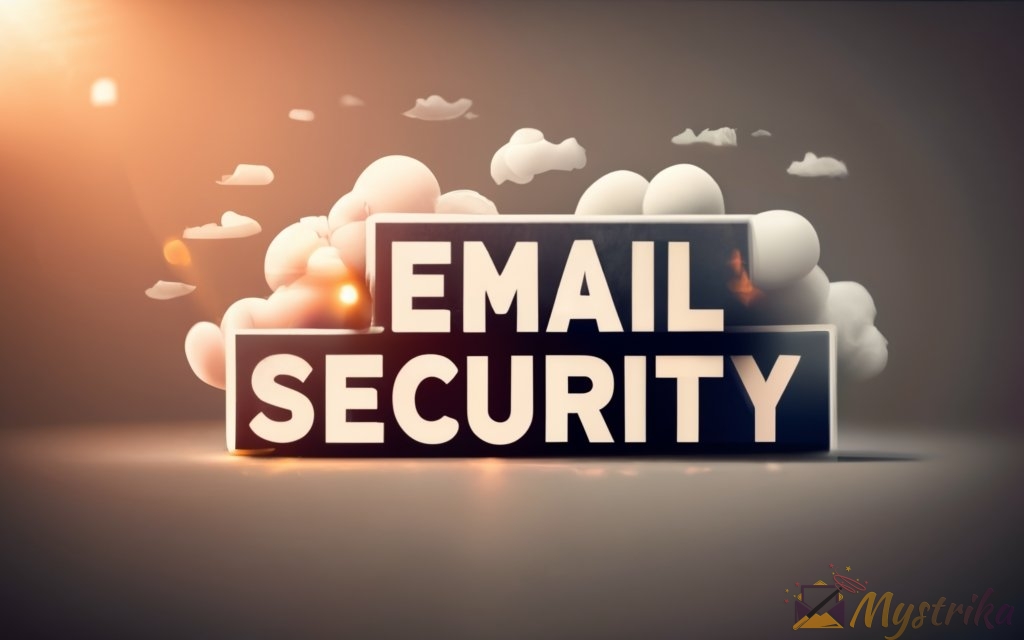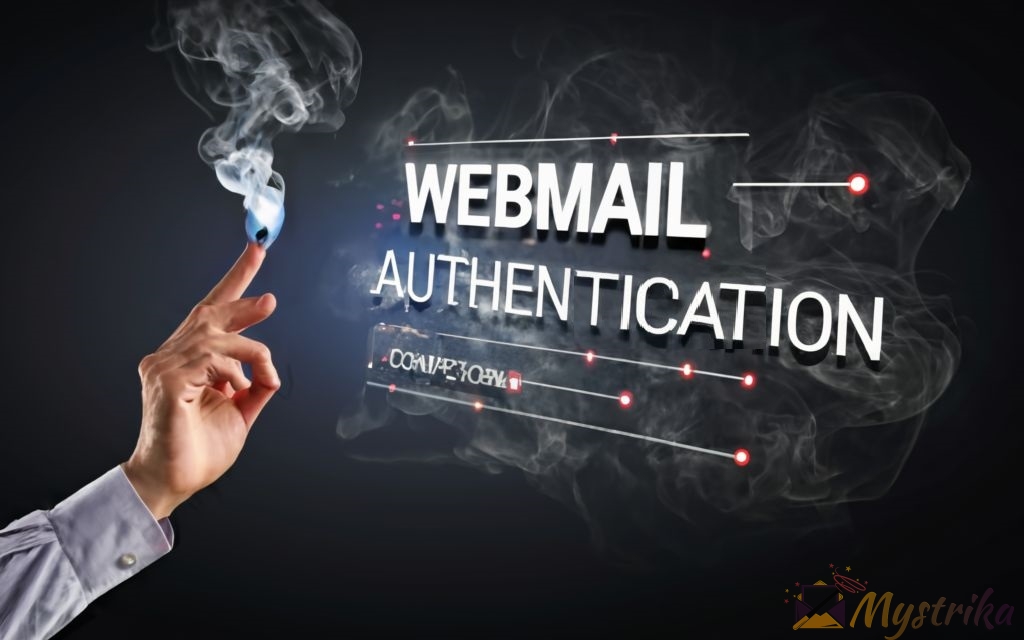Sending that first “Hello World” email is a rite of passage when starting out in tech. While easy to take for granted, seamless transmission relies on robust authentication mechanisms happening invisibly behind the scenes. When protocols break down, cryptic errors like 550 access denied codes disrupt workflows. Before slamming the laptop shut in frustration, this guide will illuminate common webmail and SMTP authentication issues, along with practical troubleshooting techniques to restore email connectivity. From hardening servers to configuring clients, we’ll cover everything from Kerberos encryption to enabling SMTP AUTH on Outlook so you can resolve nagging delivery failures. Arm yourself with knowledge and never let an authentication error delay critical communications again!
Understanding Webmail Authentication Protocols and Standards
Authenticating users is crucial for securing access to webmail services. Various protocols and standards exist to verify identities and encrypt webmail sessions. Understanding the core mechanisms involved enables effective configuration and troubleshooting.
What is NTLM Authentication and How Does it Work?
NTLM (NT Lan Manager) is a common authentication protocol used by Microsoft services, including Exchange/Outlook webmail. It evolved from the original LAN Manager protocol and uses a challenge-response mechanism to validate identities.
In NTLM authentication, the client first initiates a NEGOTIATE_MESSAGE to the server indicating it supports NTLM. The server responds with a CHALLENGE_MESSAGE containing an 8-byte random number.
The client then calculates a 24-byte response based on the challenge and the user’s password hash. It returns this response in an AUTHENTICATE_MESSAGE. The server validates the response by reproducing the calculation on its end. If the outputs match, the user’s identity is confirmed.
Several versions of NTLM exist. NTLMv1 is vulnerable to cracking attacks on the password hashes. NTLMv2 enhances security by using stronger hashes based on the HMAC-MD5 algorithm.
NTLM authentication relies on three main ports for communication:
- UDP 137 (NetBIOS name service)
- UDP 138 (NetBIOS datagram service)
- TCP 139 (NetBIOS session service)
Though deprecated, NTLM remains widely used in internal networks and legacy systems due to its compatibility with older protocols. It can also be used in hybrid environments alongside stronger standards like Kerberos.
Using Kerberos Authentication for Enhanced Webmail Security
Kerberos is a network authentication protocol that uses secret-key cryptography to verify user identities and establish encrypted channels. It offers stronger security than protocols like NTLM.
In Kerberos authentication, users are identified by security principals tied to their accounts. A Key Distribution Center (KDC) handles authentication requests and issues Ticket Granting Tickets (TGTs) which clients use to request service tickets from the Ticket Granting Service (TGS).
For webmail, the client requests a TGT from the KDC with their password which is only transmitted on the internal network. The KDC verifies this and returns a session TGT encrypted with the user’s hashed password.
The client sends the encrypted TGT to the TGS requesting access to the webmail service. The TGS validates the TGT and grants a service ticket for the webmail server. This ticket establishes an encrypted session between the client and server.
As the user’s password is never sent externally in plaintext, Kerberos provides enhanced security against remote password cracking attacks. It prevents pass-the-hash exploits and man-in-the-middle snooping.
SMTP Authentication Mechanisms like POP3 Before SMTP
SMTP (Simple Mail Transfer Protocol) is the standard protocol for routing emails globally. However, core SMTP has no inherent authentication, allowing spammers to abuse open relays. Popular authentication techniques include:
- POP3 Before SMTP: The client logs into the POP3 server before sending mail via SMTP. As POP3 requires authentication, the SMTP server trusts the client’s identity.
- CRAM-MD5: The server issues an MD5 hashed challenge which the client must encrypt with its MD5 hashed password to prove its validity.
- SMTP AUTH: The client provides SMTP login credentials, either in plain text or using authentication mechanisms like SASL.
SMTP authentication is vital as many ISPs block non-authenticated SMTP connections. Mail clients should enable it using correct credentials and encryption to avoid delivery failures.
Securing Webmail with SSL/TLS Protocols
Webmail services should use encrypted channels to prevent sensitive data exposure. SSL (Secure Sockets Layer) and its successor TLS (Transport Layer Security) are standard protocols for establishing encrypted sessions.
SSL/TLS protects webmail login credentials and messages by:
- Encrypting transmission between client and server using symmetric keys
- Authenticating servers using signed digital certificates
- Maintaining data integrity using message authentication codes
Up-to-date encryption cipher suites should be used like AES-256 and SHA-2 to minimize vulnerability to attacks. Support for TLS 1.2 or 1.3 is recommended as SSL and TLS 1.0/1.1 have cryptographic weaknesses.
When accessing webmail, users must verify the provider’s certificate matches their domain. The connection should display a padlock icon and use https:// URLs for guaranteed encryption. Enforcing HTTPS across all pages combats sniffing and man-in-the-middle attacks.
By understanding core webmail authentication protocols like NTLM, Kerberos, and SMTP AUTH, one can properly configure servers and clients for optimal security. Proper implementation of SSL/TLS further encrypts connections to protect confidentiality. Adhering to strong standards lays the foundation for robust authentication and encryption.

Troubleshooting Common Webmail and SMTP Error Codes
Despite proper configuration, webmail users may encounter frustrating SMTP errors preventing email delivery. Diagnosing the causes of cryptic numerical codes is key to restoring functionality. Let’s explore solutions for the most common authentication-related failures.
Fixing the “550 Please Turn On SMTP Authentication” Error
A “550 Please turn on SMTP Authentication” error indicates the mail server requires authentication to send emails. SMTP authentication adds a layer of security to confirm the sender’s identity.
To enable SMTP authentication in common mail clients:
- Outlook: Go to Account Settings > Change > More Settings > Outgoing Server. Check “My outgoing server requires authentication.”
- Gmail: Add account > Send through Gmail > Enter SMTP details and enable authentication.
- Apple Mail:Preferences > Accounts > Outgoing Mail Server > Edit SMTP Server List. Check “Use Authentication.”
- Thunderbird: Options > Account Settings > Outgoing Server > Enable “Normal Password” authentication.
Other causes beyond a simple misconfiguration:
- Incorrect credentials – Double check your username and password are correct.
- SSL/TLS issues – Ensure appropriate SSL/TLS encryption is enabled if required by your provider.
- Firewall blocking – Some firewalls and antivirus programs may block authentication ports. Temporarily disable them and test.
Once configured properly, the client will authenticate successfully before sending mail, resolving the 550 error.
Debugging SMTP “Authentication Required” and “Unrecognized Authentication Type” Errors
These errors indicate the server requires the client to authenticate with valid credentials before accepting mail for delivery.
To diagnose the specific causes:
- Verify your SMTP username and password are correct if using basic authentication.
- If using OAUTH2 authentication, confirm your auth token or OAuth settings are valid.
- Try temporarily switching protocols like from OAUTH2 to basic auth to isolate the issue.
- Check for VPNs, proxies, or firewalls that may be interfering with authentication.
- Inspect SMTP logs for any protocol mismatches or failed credential validation.
Addressing these specifics will allow the client to successfully authenticate and deliver mail.
Resolving “Unable to Establish Authenticated Client-Server Connection” Issues
This error points to a breakdown in the SMTP authentication handshake between client and server.
Potential solutions include:
- Restarting the mail client and server to reset the connection.
- Confirming the encryption protocols match on both sides.
- Verifying the server allows Cleartext authentication if SSL/TLS is not in use.
- Checking for port blocking on networks or firewalls disrupting communication.
- Ensuring authentication settings fully match between client and server config.
Once any discrepancies are addressed, the client and server can re-establish a properly authenticated link.
Handling SMTP Extension Errors Like “SMTP AUTH Extension Not Supported”
This indicates the SMTP server does not support the AUTH extension used for authentication.
To troubleshoot:
- Try a different authentication method like basic auth instead of OAUTH2.
- Confirm your SMTP server software and version supports SMTP extensions.
- Check server logs for any bugs, faulty extensions, or failed AUTH commands.
- Consider updating older SMTP software which may have limited extension support.
With the specific extension issue identified, you can reconfigure clients to use a compatible supported method.
Pinpointing the sources of cryptic SMTP error codes is challenging but methodical troubleshooting determines the root causes. Addressing authentication problems ensures your webmail can transmit messages smoothly and securely.
Enabling Secure SMTP Authentication in Mail Clients
To prevent delivery issues, mail clients must be properly configured to authenticate with SMTP servers. Settings vary across different applications and platforms.
Turning on SMTP Authentication in Outlook and Windows Mail
Microsoft Outlook and Windows Mail provide built-in options to activate SMTP authentication.
In Outlook desktop clients:
- Access Account Settings > Select the email account > Change > More Settings
- Navigate to the Outgoing Server tab and check “My outgoing server requires authentication”
- Select “Use same settings as my incoming mail server”
- Click Ok and Next to save changes
In Windows Mail universal app:
- Open Settings > Accounts > Select the account
- Scroll down to “More email settings” and choose “Outgoing server”
- Turn on “Require authentication” and select “Use credentials from my incoming email server”
- Click Save to confirm changes
Enabling these settings configures Outlook and Windows Mail to send the necessary login credentials when connecting to SMTP servers.
Configuring Gmail and Other Webmail Providers to Use SMTP Auth
Webmail services like Gmail, Outlook.com, and Yahoo Mail have dedicated settings to activate SMTP authentication.
In Gmail:
- Go to Settings > Accounts and Import > Send mail as
- Add another email address you want to send from
- Enter your full email address and click Next Step
- Select “Send through Gmail SMTP” and click Next Step
- Enter your SMTP server details and credentials provided by your email service
- Choose “Secured connection using TLS” and click Add Account
Similar options are available in Outlook.com, Yahoo Mail, and other webmail providers to configure SMTP auth for sending emails.
Enabling SMTP Authentication on Mac Mail, Thunderbird, and Other Desktop Clients
Here are steps to enable SMTP authentication on common Mac and Linux email clients:
Mac Mail
- Preferences > Accounts > Select the account
- Click dropdown next to SMTP server and choose Edit SMTP Server List
- Check “Use Authentication” and enter your credentials
- Click OK to save
Mozilla Thunderbird
- Open the Account Settings window
- Choose your account on the left and click Outgoing Server (SMTP)
- Select the SMTP server, click Edit, and change Authentication to “Normal Password”
- Enter your username and password and click Ok
Other Linux clients like Evolution and KMail provide analogous settings to activate SMTP authentication with the proper credentials configured.
Additionally, users can manually specify SMTP servers and authentication details in the sender configuration options of most clients.
With the wide range of client software in use, following these steps specific to each one ensures your apps transmit messages securely.

Securing Mail Servers Against Unauthorized Access
Mail servers handle sensitive communications for users and must be safeguarded against unauthorized use. A multi-layered security approach is recommended.
Using Firewalls and Access Control Lists to Restrict SMTP Connections
Network-level access controls limit who can connect to mail servers over SMTP:
- Firewalls – Allow only trusted IP ranges and block suspicious hosts. Stateful inspection validates legitimate traffic.
- Access control lists – Restrict SMTP connections to specific sender IPs and domains.
- VPN segmentation – Use VPNs to isolate and control server access to trusted clients.
- TLS inspection – Inspect TLS encrypted sessions for protocol compliance and data exfiltration.
Combining these controls filters out spam senders and limits opportunities for exploitation.
Configuring Mail Servers to Only Accept Authenticated SMTP Sessions
Mail server software settings can enforce authentication:
- Disable anonymous connections in favor of mandatory authentication. Require valid credentials.
- Enable SMTP AUTH if supported and select strong methods like CRAM-MD5.
- Configure SMTP submission ports like 587 to use authentication while disabling it on port 25.
- Consider blocking open relays on port 25 while requiring authenticated TLS on submissions ports.
- Filter source IPs, restrict acceptable domains, and limit daily send rates per user.
Applying these measures ensures all server-side SMTP transmissions originate from verified identities.
Blocking Anonymous SMTP Requests
Steps to block unauthenticated SMTP mail flows:
- Disable anonymous SMTP AUTH LOGIN methods which expose credentials.
- Filter source IPs not tied to your users or systems. Reject unknown senders.
- Configure your SPF policy to reject unauthorized sending domains.
- Inspect HELO/EHLO domain validity and reject invalid SMTP handshakes.
- Limit accepted recipients and domains to company namespaces you control.
These best practices prevent abuse of open servers for spam and spoofing.
Detecting and Preventing SMTP Relay Vulnerabilities
SMTP open relays allow spammers to route mail through your servers. To protect against relay attacks:
- Disable mail relay functionality unless strategically required.
- Allow relaying only from trusted IPs and domains of known senders. Reject unknown sources.
- Use TLS certificate validation to authenticate servers in SMTP relays.
- Monitor traffic for unusual volume spikes indicative of abuse.
- Maintain DMARC, DKIM, and SPF policies to validate legitimate senders.
Vigilance in shutting down avenues for SMTP relay and open mail proxying is essential for security.
Hardening mail server configurations coupled with network access controls limits interruptions and malicious use. Proactive measures help administrators ensure deliverability for legitimate users while blocking unauthorized access.
Maintaining Email Security After Authentication
SMTP authentication checks only confirm senders’ identities initially. Ongoing protocols and vigilance are needed to prevent authenticated channels from being exploited.
Additional Measures Like SPF, DKIM, and DMARC
Extra email validation protocols augment baseline SMTP authentication:
- SPF (Sender Policy Framework) verifies senders are authorized to send from their domains by cross checking their IPs.
- DKIM (DomainKeys Identified Mail) validates message integrity by checking cryptographic signatures tied to the sender’s domain.
- DMARC (Domain-based Message Authentication, Reporting, and Conformance) builds on SPF and DKIM to block unauthorized senders spoofing domains.
Implementing these mechanisms provides added layers of protection beyond initial authentication.
Monitoring Authenticated SMTP Traffic for Suspicious Patterns
Even valid credentials can be hijacked for abuse. Analyze authenticated traffic to detect:
- Unusual SMTP connection spikes indicating possible botnet activity.
- Flow anomalies like unexpected destination domains or geographic sending patterns.
- Distribution inconsistencies such as abnormal spikes in recipients per message.
- Message metadata deviations that could reflect spoofing and forgery attempts.
- Invalid SPF, DKIM, or DMARC validations warranting further investigation.
Ongoing monitoring enables early threat detection despite authenticated sessions.
Updating Mail Server Software Regularly to Patch Vulnerabilities
All software has potential security bugs. Consistently patching mail servers:
- Closes vulnerabilities which could be used to intercept credentials or bypass authentication.
- Ensures continued support for the latest secure protocols and ciphers.
- Adds new threat detection capabilities like algorithmic filtering for spam and malware.
- Forces disruption of any persistent intruder footholds established in older software versions.
Proactive update diligence prevents authenticated access from being leveraged for abuse through newly discovered exploits.
SMTP authentication is only the initial gatekeeper – subsequent vigilance is required to guarantee security in depth. Consistent inspection, layered protocols, and prompt patching help thwart emerging threats targeting authenticated channels. Ongoing maintenance ensures your diligent authentication efforts are not exercised in vain.

Adopting Best Practices for Webmail Authentication
Well-planned authentication controls and policies greatly enhance webmail security. Recommended practices involve people, processes and technology.
Guidance on Secure Password Policies and Multi-Factor Authentication
Robust password practices impede credential theft and replay attacks:
- Mandate strong passwords containing upper, lower, numbers and special characters with a minimum 12 character length.
- Set password expiration every 60-90 days along with history checks to prevent reuse.
- Distribute passwords securely instead of sending in emails. Avoid common terms.
- Enable multi-factor authentication using biometrics, security keys or one-time codes as a second layer beyond passwords.
- Educate users on sophistication of phishing and social engineering to avoid disclosure.
- Provide self-service password reset functions to mitigate social engineering of admins.
- Establish secure internal password vaults accessible to designated administrative owners.
Following Principles of Least Privilege for Mail Server Access
Limiting mail server access by role reduces exposure:
- Avoid broad administrative privileges; assign granular permissions for specific duties.
- Segment webmail infrastructure into development, staging and production zones with firewall divisions.
- Only allow remote access over VPN with MFA, limited to designated admin jumpboxes.
- Implement IP allowlisting so only approved systems can connect inbound to mail servers.
- Disable external access to management ports like SMTP 25 and IMAP 143 in favor of submission ports.
- Log and alert on abnormal elevation of privileges, users, or connections.
Privileged access should be just enough for individuals to fulfill their direct duties.
Logging and Auditing SMTP Sessions for Incident Response
Comprehensive logging allows assessment of anomalies:
- Record detailed SMTP connection, authentication, and transmission logs.
- Integrate feeds with a central SIEM system to correlate authorization events.
- Scrutinize incidents like failed logins, session errors, and policy violations.
- Maintain audit trails of all administrative and access changes imposed.
- Regularly review activity reports and metrics to identify abnormal patterns early.
Thorough logging creates an evidentiary trail to expedite incident response.
Webmail systems face threats both within and outside the organization. Prudent access controls, vigilant logging, and secure credentials in layers work in concert to maximize authentication reliability. Adopting sound administrative best practices makes security an enabler of communication rather than a burden.
Key Takeaways on Resolving Webmail and SMTP Authentication Issues
Robust authentication is crucial for securing webmail access. Key lessons include:
- Use strong standards like Kerberos and TLS for encryption and identity verification. Protocols like NTLM have weaknesses.
- Pinpoint and resolve common SMTP errors through methodical troubleshooting. Enable authentication in mail clients.
- Harden mail servers against intrusion through layers like firewalls, access controls, and SMTP hardening.
- Complement authentication with email validation protocols like SPF, DKIM and DMARC for added security.
- Adopt practices like privileged access controls, password policies, and logging to prevent exploitation of authenticated sessions.
- Maintain constant vigilance through monitoring and patching to detect emerging threats and close open doorways.
With a fundamental grasp of protocols, diligent troubleshooting, secure configurations, and best practices – administrators can tackle authentication challenges. A proactive stance secures webmail users without disrupting communication and productivity.

Frequently Asked Questions
Q: What are the most common webmail authentication protocols?
A: Popular standards include NTLM, Kerberos, SSL/TLS, and SMTP authentication mechanisms like CRAM-MD5. Legacy systems may still use older protocols like POP3 before SMTP.
Q: Why do I get authentication errors when trying to access webmail?
A: Common causes include incorrect credentials, disabled authentication settings in the mail client or server, encryption mismatches, firewall interference, and unsupported authentication methods.
Q: How do I enable SMTP authentication on my desktop mail client?
A: Most clients like Outlook, Thunderbird, and Mac Mail have dedicated options to activate SMTP authentication using your email credentials.
Q: What are some best practices for webmail authentication security?
A: Practices like multi-factor authentication, privileged access controls, allowlisting, DNS security protocols, monitoring, patching and logging help protect authenticated sessions.
Q: What additional measures besides authentication should be used?
A: Add layers like TLS encryption, SPF, DKIM and DMARC validation, activity monitoring, and regular software updates to block exploitation of authenticated connections.
Q: How can I troubleshoot SMTP errors like code 550?
A: Identify the specific cause like an unauthenticated connection attempt or credential issue. Check configurations in the client and server side to enable a compatible authentication mechanism.
Q: What are symptoms of inadequate mail server authentication?
A: Warning signs include spam originating from the domain, blacklisting, mail flow errors, spoofing, and vulnerability to relay attacks. These indicate a need to reevaluate server defenses.
Q: How can I prevent unauthorized SMTP mail relaying?
A: Measures like disabling open mail relays, IP allowlisting, recipient allowlisting, and mandatory TLS certificate validation for relays help secure servers from exploitation.

